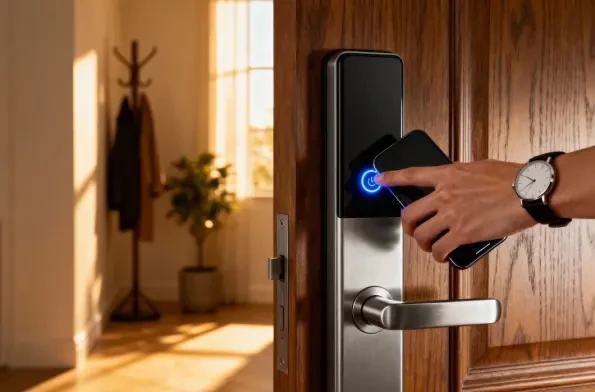The Evolving Landscape of Physical Access Control
Imagine a world where a single tap on a smartphone grants secure entry to an office building, seamlessly integrates with environmental controls, and enhances overall safety, making daily interactions with spaces more efficient and protected. This scenario is no longer a distant vision but a tangible reality in the physical access control industry. The sector is undergoing a profound shift, moving away from traditional methods such as physical keys and plastic cards toward innovative digital solutions. This transformation is redefining building security, making it a cornerstone of modern safety frameworks by ensuring that only authorized individuals gain entry while streamlining operational processes.
The scope of access control extends far beyond mere door locks, impacting user experience and efficiency across various environments, from corporate offices to educational institutions. Digital credentials, mobile access, and biometric systems are at the forefront, driven by key players like HID Global, which continues to lead with cutting-edge solutions. These technologies are increasingly integrated with smart building systems, allowing for synchronized operations like lighting and HVAC adjustments based on occupancy, thus optimizing energy use and reducing costs.
Technological advancements such as mobile credentials and biometrics are not just trends but necessities in an era prioritizing speed and security. The growing demand for seamless integration with other building management systems highlights the industry’s direction toward holistic, interconnected ecosystems. As these solutions evolve, they promise to enhance not only protection but also the way occupants interact with their environments, setting a new standard for what secure access means in today’s world.
Key Digital Trends Shaping Access Control
Emerging Technologies and Market Drivers
The access control industry is being reshaped by a wave of emerging technologies that prioritize both security and convenience. Mobile identities are rapidly gaining traction, allowing users to unlock doors and access services with their smartphones, eliminating the need for physical cards. Biometrics, with an adoption rate of 39%, offers a highly secure method through unique identifiers like fingerprints or facial recognition, reducing the risk of unauthorized access.
Cloud-native platforms are another driving force, enabling remote management and real-time updates to access systems. These platforms cater to evolving consumer behaviors that demand efficiency and ease of use, such as frictionless entry and minimal administrative overhead. Additionally, market drivers like the push for sustainability are influencing adoption, as digital solutions reduce the environmental impact of traditional credentials while enhancing security through advanced encryption and data analytics.
Opportunities abound in leveraging access data for predictive threat detection, identifying potential risks before they materialize. Similarly, space optimization using occupancy data can lead to significant cost savings in large facilities. These innovations reflect a broader shift toward systems that not only protect but also add strategic value to organizations by aligning with operational and environmental goals.
Market Insights and Growth Projections
Data-driven insights reveal a robust growth trajectory for digital access control solutions. Projections indicate that 80% of organizations are expected to adopt mobile identities within the next five years, signaling a near-universal shift to digital credentials. This rapid uptake is fueled by the need for scalable, adaptable systems that can keep pace with technological advancements and security demands in an increasingly connected world.
Financial benefits are also a compelling factor, with smart buildings incorporating access control technologies yielding up to 8% higher returns per square foot due to operational efficiencies and sustainability certifications. These buildings often command rental premiums, underscoring the economic incentives for adopting digital solutions. Market performance indicators suggest that investment in such systems is not merely a cost but a revenue-generating opportunity for property managers and owners.
Looking ahead, the industry is poised for continued expansion as digital credential usage grows and integration with other smart technologies deepens. The focus on user convenience and administrative simplicity will likely accelerate adoption rates, while emerging applications in predictive analytics and energy management are expected to redefine the value proposition of access control systems over the coming years.
Challenges in Adopting Digital Access Solutions
The transition to digital access control, while promising, is not without significant hurdles. One major challenge lies in the long lifecycles of existing systems, often spanning 15 to 20 years, which can delay the adoption of newer technologies due to compatibility issues or high replacement costs. Organizations must navigate these constraints while balancing the need for updated security measures in a rapidly changing threat landscape.
Cybersecurity risks pose another critical obstacle, as digital environments become prime targets for sophisticated attacks. The interconnected nature of modern systems amplifies vulnerabilities, requiring robust safeguards to protect sensitive data and ensure system integrity. Approximately 28% of organizations report integration challenges with legacy infrastructure, highlighting the complexity of merging old and new technologies without disrupting operations.
To address these issues, solutions such as open standards like the Open Supervised Device Protocol (OSDP) are gaining prominence, facilitating interoperability across diverse systems. Platforms like Mercury offer flexibility for updates without hardware overhauls, while dual-support readers for both RFID and digital credentials enable a phased transition. These strategies help mitigate risks and ensure a smoother shift to advanced access control frameworks.
Regulatory and Security Standards in Digital Access Control
Navigating the regulatory landscape is essential for the access control industry as it evolves into a digital domain. Standards such as ISO 27001, SOC Type 2, and CSA STAR provide frameworks for ensuring data protection and operational reliability, fostering trust among stakeholders. Compliance with these benchmarks is not just a legal requirement but a critical component in building confidence in digital solutions.
HID’s SEAL-certified SEOS chipset exemplifies the commitment to advanced security, offering protection against both physical and cyber threats. Such certifications influence system design by embedding rigorous security protocols from the ground up, ensuring that products are resilient in the face of evolving risks. Regulatory changes often drive innovation, pushing manufacturers to develop solutions that meet or exceed stringent requirements.
The impact of these standards extends to industry practices, shaping how organizations approach the safeguarding of access systems. By adhering to globally recognized guidelines, companies can mitigate vulnerabilities and maintain a secure environment for users. This focus on compliance ensures that digital transformation does not come at the expense of safety, reinforcing the reliability of modern access control technologies.
The Future of Access Control: Innovation and Opportunities
The horizon of access control is brimming with potential as emerging technologies promise to redefine its role in security and building management. Advanced biometrics, capable of even more precise identification, are set to become mainstream, enhancing both accuracy and user convenience. Deeper integrations with smart building systems, such as controlling HVAC or calling elevators via mobile access, will further streamline operations and reduce energy waste.
Market disruptors, including evolving cyber threats and shifting consumer preferences for frictionless experiences, are likely to challenge existing paradigms. Global economic conditions may also influence investment in security technologies, prompting organizations to seek cost-effective yet robust solutions. These factors underscore the need for adaptive systems that can respond to unforeseen changes without requiring complete overhauls.
Innovation through open, upgradable systems offers a pathway to sustained relevance, allowing for incremental improvements over time. Sustainability remains a key driver, with digital credentials and data-driven optimizations aligning with broader environmental goals. As the industry moves forward, these opportunities will shape access control into a pivotal element of smart, secure, and sustainable building ecosystems.
Conclusion: Transforming Access Control into a Strategic Asset
Reflecting on the insights gathered, the journey of digital transformation in access control reveals a profound shift that turns traditional security measures into strategic assets. Enhanced protection, a remarkable 75% reduction in carbon emissions through digital credentials, and improved operational efficiency stand out as defining achievements. These advancements underscore how far the industry has progressed in aligning security with broader organizational goals.
Looking back, the integration with smart building systems marked a turning point, offering tangible financial benefits and paving the way for innovative services. For organizations aiming to build on this momentum, investing in future-proof, interoperable solutions emerges as a critical step. Prioritizing platforms that support gradual transitions and updates ensures resilience against emerging threats and technological shifts.
Beyond immediate gains, the focus shifts to harnessing access data for deeper insights into occupancy and threat prediction, opening new avenues for optimization. Embracing sustainability through ESG-aligned initiatives also proves vital, promising long-term value. As the landscape continues to evolve, these actionable strategies provide a roadmap for navigating the complexities and capitalizing on the untapped potential within access control systems.













